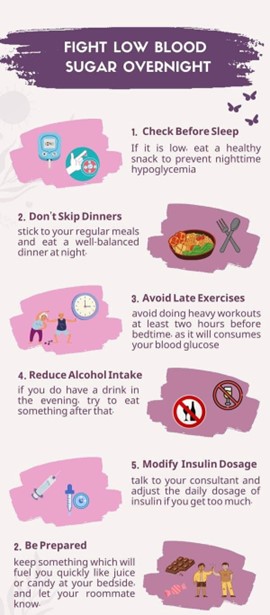An adult female client with type 1 diabetes mellitus is receiving NPH insulin 35 units each morning. Which finding should the practical nurse (PN) document as evidence that the amount of insulin is inadequate?
States her feet are constantly cold along with feeling numb
Consecutive evening serum glucose greater than 260 mg/dL
A wound on the ankle that starts to drain and becomes painful
Reports nausea in the morning but still able to eat breakfast
The Correct Answer is B
The correct answer and explanation is:
b) Consecutive evening serum glucose greater than 260 mg/dL.
This is the finding that the PN should document as evidence that the amount of insulin is inadequate for the client with type 1 diabetes mellitus. Consecutive evening serum glucose greater than 260 mg/dL indicates hyperglycemia, which means that the client's blood sugar is too high and not well controlled by the insulin dose.
The PN should report this finding to the healthcare provider and expect a possible adjustment in the insulin regimen.
a) States her feet are constantly cold along with feeling numb.
This is not the finding that the PN should document as evidence that the amount of insulin is inadequate for the client with type 1 diabetes mellitus.
States her feet are constantly cold along with feeling numb may indicate peripheral neuropathy, which is a complication of diabetes that affects the nerves in the feet and legs. It is caused by chronic high blood sugar levels over time, not by a single dose of insulin.
c) A wound on the ankle that starts to drain and becomes painful.
This is not the finding that the PN should document as evidence that the amount of insulin is inadequate for the client with type 1 diabetes mellitus. A wound on the ankle that starts to drain and becomes painful may indicate an infection, which is a risk factor for diabetic clients due to impaired wound healing and immune function. It is not directly related to the insulin dose, although it may affect the blood sugar levels and require more insulin.
d) Reports nausea in the morning but still able to eat breakfast.
This is not the finding that the PN should document as evidence that the amount of insulin is inadequate for the client with type 1 diabetes mellitus. Reports nausea in the morning but still able to eat breakfast may indicate morning sickness, which is a common symptom of pregnancy. It is not related to the insulin dose, although it may affect the blood sugar levels and require more frequent monitoring and adjustment.

Nursing Test Bank
Naxlex Comprehensive Predictor Exams
Related Questions
Correct Answer is B
Explanation
Choice A rationale:
Diarrhea and flatulence are common side effects of statin medications like lovastatin but are typically not considered emergencies. They may be managed with dietary adjustments or over-the-counter remedies.
Choice B rationale:
Muscle pain, especially if severe, requires the most immediate follow-up by the nurse. Muscle pain can be a symptom of a rare but serious side effect called rhabdomyolysis, which can lead to muscle breakdown and potential kidney damage. Prompt assessment and intervention are necessary if severe muscle pain occurs.
Choice C rationale:
Altered taste is a side effect of lovastatin but is generally not considered a medical emergency. It may affect the client's quality of life but does not require immediate follow-up.
Choice D rationale:
Abdominal cramps may occur as a side effect of lovastatin, but they are not typically considered an emergency. Like choice A, abdominal cramps can often be managed with dietary adjustments or over-the-counter remedies.
Correct Answer is D
Explanation
Choice A rationale:
Washing the patient's left side first and then moving to the right side does not demonstrate an individualized approach or consideration for the patient's preferences and abilities. It is important to involve the patient in the decision-making process, especially when they have hemiparesis, to promote their autonomy and comfort.
Choice B rationale:
Washing the patient's right side first and then moving to the left side does not consider the patient's preference and may not align with their abilities or comfort. It is essential to prioritize the patient's preferences and needs.
Choice C rationale:
Washing both sides of the patient at the same time, starting from the head and moving down, may not be feasible or comfortable for the patient, especially if they have hemiparesis. This approach does not demonstrate an individualized care plan based on the patient's specific condition.
Choice D rationale:
Asking the patient which side they prefer to wash first and then following their preference is the most patient-centered and appropriate approach. This approach respects the patient's autonomy and ensures that their needs and comfort are prioritized during the bathing process. It allows for individualized care based on the patient's abilities and preferences.
Whether you are a student looking to ace your exams or a practicing nurse seeking to enhance your expertise , our nursing education contents will empower you with the confidence and competence to make a difference in the lives of patients and become a respected leader in the healthcare field.
Visit Naxlex, invest in your future and unlock endless possibilities with our unparalleled nursing education contents today
Report Wrong Answer on the Current Question
Do you disagree with the answer? If yes, what is your expected answer? Explain.
Kindly be descriptive with the issue you are facing.
